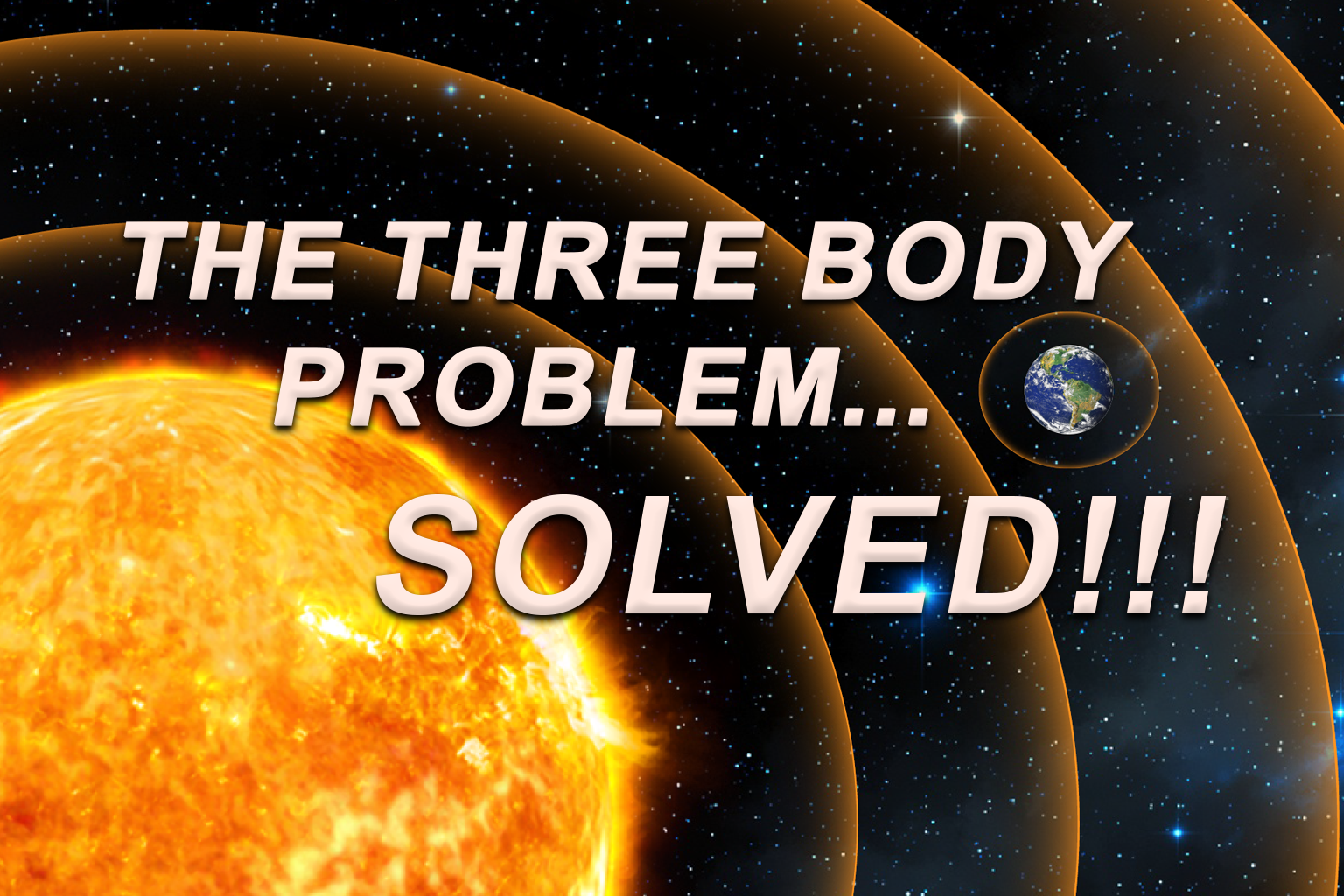Bjerknes Forces, Magnetosonic Waves, and the Solar Induction Dynamo
Introduction
The classical three-body problem has long been one of the most stubborn challenges in astrophysics, largely due to the chaotic and unpredictable interactions between three gravitational bodies. Traditional Newtonian mechanics and even relativistic perturbation models struggle to explain why our solar system remains so stable. This article proposes a different approach—one rooted not in spacetime curvature, but in plasma dynamics, magnetosonic wave interactions, and resonance.
Wave-Based Orbital Mechanics
Instead of relying on gravity as a mass-based attractive force, this framework treats the Sun as a resonant oscillator generating a spectrum of plasma waves. These waves, including magnetosonic and Langmuir types, form standing wave patterns throughout the heliosphere. Planetary bodies don’t orbit randomly—they resonate within these wave structures, locking into stable nodes. This model draws heavily from magnetohydrodynamics and acoustic wave theory, offering a predictive, testable alternative to classical gravitation.
Bjerknes Forces in Space
The Bjerknes force—originally described in fluid dynamics—helps explain this interaction. When applied to plasma physics, it treats each planetary magnetosphere or ionosphere as a “bubble” in a solar plasma ocean. As magnetosonic waves pass through this medium, they apply oscillatory pressure on these bubbles. If two planetary bubbles are in phase with the same wave, they experience a Primary Bjerknes force that stabilizes their relative positions. This resonance effect could explain why planets remain spaced the way they do and why chaotic gravitational collapse doesn’t occur.
Standing Wave Structures
Magnetosonic waves, fueled by the Sun’s rotation, constant reconnection events, and coronal mass ejections, travel outward across the heliosphere. They form large-scale standing wave nodes—places where wave energy reinforces itself and creates pressure troughs. Planets appear to settle into these nodes. Langmuir waves regulate plasma density within this system, ensuring that the standing wave structure remains coherent. This removes the need for dark matter as a scaffolding for galactic and planetary structures. Everything is coordinated through resonance, not invisible mass.
The Solar Induction Dynamo
The Solar Induction Dynamo is key to keeping this system energized. It functions through continuous energy exchange between the Sun and the planets, using several mechanisms. Birkeland currents carry vast electrical streams along magnetic field lines, energizing planetary cores. ELF and ULF waves act as current drivers, reinforcing planetary magnetic fields through inductive coupling governed by Lenz’s Law. Alfvén waves propagate along magnetic flux tubes, efficiently transferring momentum and energy from solar activity to planetary systems. These phenomena create the electromagnetic infrastructure that allows magnetosonic waves to organize planetary motion.
Ionospheric Resonance and Stabilization
Even for planets like Mars and Venus that lack robust global magnetospheres, ionospheric resonance can serve a stabilizing role. Their upper atmospheres still interact with solar plasma, generating oscillatory responses. This generates a localized version of the Bjerknes force, allowing these planets to remain locked into their orbital tracks through wave synchronization. Langmuir oscillations within these ionospheres help adjust plasma density, acting as a tuning mechanism that keeps everything aligned with the solar pulse.
Predictions and Applications
This model leads to direct, testable predictions. If planetary orbits truly correspond to magnetosonic wave nodes, we should be able to detect correlations between orbital radii and standing wave patterns observed in heliospheric plasma. Instruments aboard spacecraft like the Parker Solar Probe or Voyager should show periodic fluctuations or troughs at distances corresponding to planetary orbits. Similarly, spacecraft near planetary ionospheres should detect wave interference patterns synchronized with solar wave emissions.
The implications extend beyond astronomy. If Bjerknes-type forces in a plasma medium can stabilize planetary motion, then engineers could design plasma propulsion or stabilization systems for spacecraft using the same principles. Aerospace systems could one day use wave harmonics for navigation or orbital locking without relying on fuel-based propulsion. This opens the door to entirely new kinds of motion control rooted in resonance, not reaction mass.
Conclusion
In summary, this wave-based approach to the three-body problem removes the dependence on gravitational attraction or curved spacetime. Instead, it replaces them with testable, measurable interactions between plasma waves and planetary systems. Planetary motion becomes a symphony of frequencies, nodes, and pressure interactions. Magnetosonic waves act as the conductor, while planetary magnetospheres and ionospheres play their resonant roles in lockstep with the Sun’s rhythm. This offers a powerful new framework to not only re-express gravitational dynamics, but to begin engineering with them.
References
Harnett, E. M., & Winglee, R. M. (2003). Three-dimensional multi-fluid simulations of ionospheric loss at Mars from nominal solar wind conditions to extreme conditions. Journal of Geophysical Research: Space Physics, 108(A12), 1462. https://doi.org/10.1029/2003JA010014
Heikkila, W. J. (2011). Earth’s Magnetosphere and Dynamo. Physics of the Earth’s Space Environment, 301–345. https://doi.org/10.1007/978-3-642-18619-5_8
Singer, H. J., Matheson, L. N., Grubb, R. N., Newman, A. L., & Bouwer, S. D. (1996). Monitoring Space Weather with the GOES Magnetometers. Proceedings of SPIE, 2812, 299–308. https://doi.org/10.1117/12.254077
Xia, H., Francois, N., & Punzmann, H. (2020). Wave-driven Particle Self-organization. Nature Communications, 11(1), 698. https://doi.org/10.1038/s41467-020-14505-5
Ergun, R. E., et al. (2001). Parallel electric fields in the upward current region of the aurora: Indirect and direct observations. Physical Review Letters, 87(4), 045003. https://doi.org/10.1103/PhysRevLett.87.045003
Engebretson, M. J., et al. (1998). The dependence of high-latitude Pc5 ULF waves on solar wind velocity and on the phase of high-speed solar wind streams. Journal of Geophysical Research: Space Physics, 103(A11), 26159–26172. https://doi.org/10.1029/97JA03143
Ma, Q., et al. (2016). Electron scattering by magnetosonic waves in the Earth’s inner magnetosphere. Journal of Geophysical Research: Space Physics, 121(7), 5522–5537. https://doi.org/10.1002/2016JA022583
Hasegawa, A., Chen, L., & Okuda, H. (1976). Kinetic Processes in Plasma Heating by Resonant Mode Conversion of Alfvén Wave. The Physics of Fluids, 19(12), 1924. https://doi.org/10.1063/1.861310
Zhelavskaya, I. S., et al. (2016). Automated determination of electron density from upper-hybrid and whistler mode waves observed by Van Allen Probes. Journal of Geophysical Research: Space Physics, 121(5), 4618–4635. https://doi.org/10.1002/2016JA022594
Gurnett, D. A., & Bhattacharjee, A. (2005). Introduction to Plasma Physics with Space and Laboratory Applications. Cambridge University Press. https://doi.org/10.1017/CBO9780511809274
Balikhin, M. A., et al. (2008). Experimental determination of the dispersion of waves observed upstream of a quasiperpendicular shock. Geophysical Research Letters, 35(7), L07104. https://doi.org/10.1029/2007GL032732

